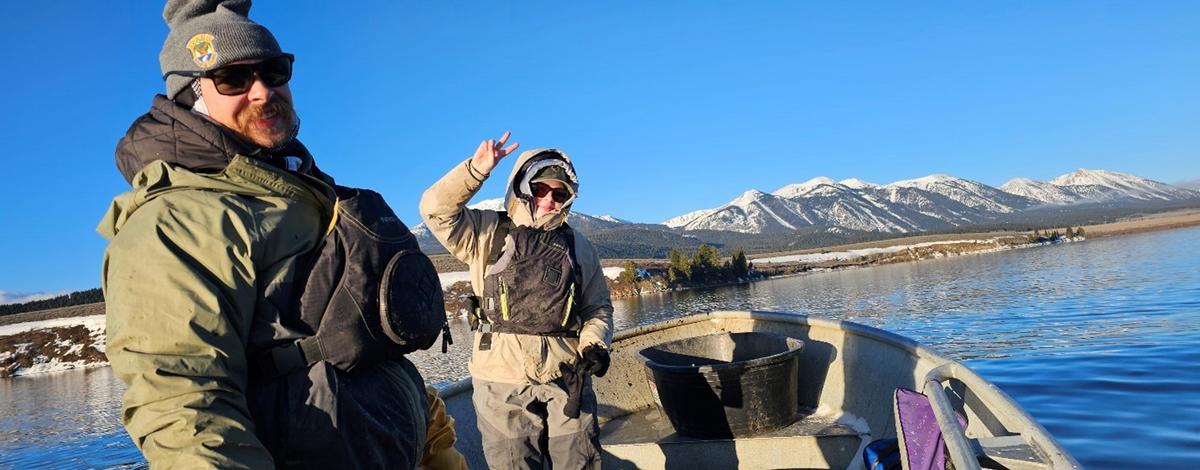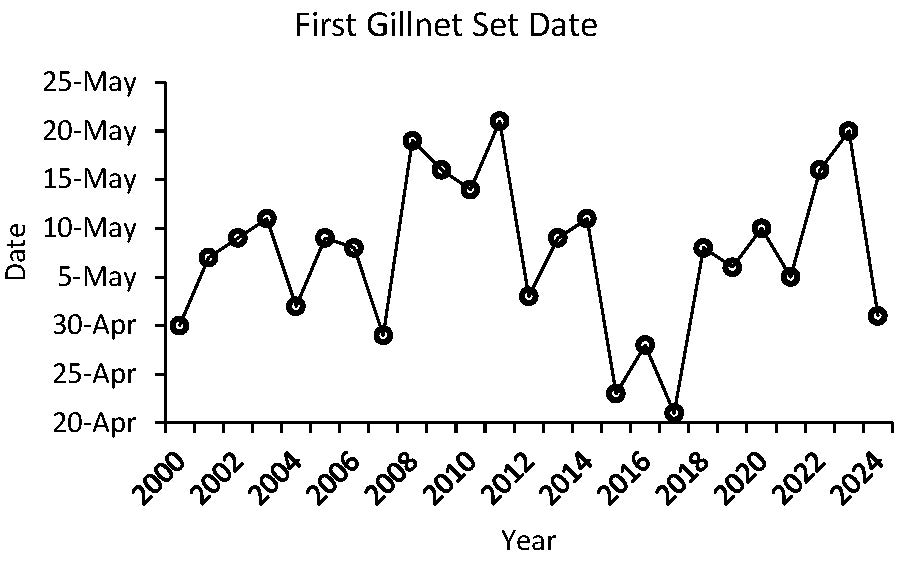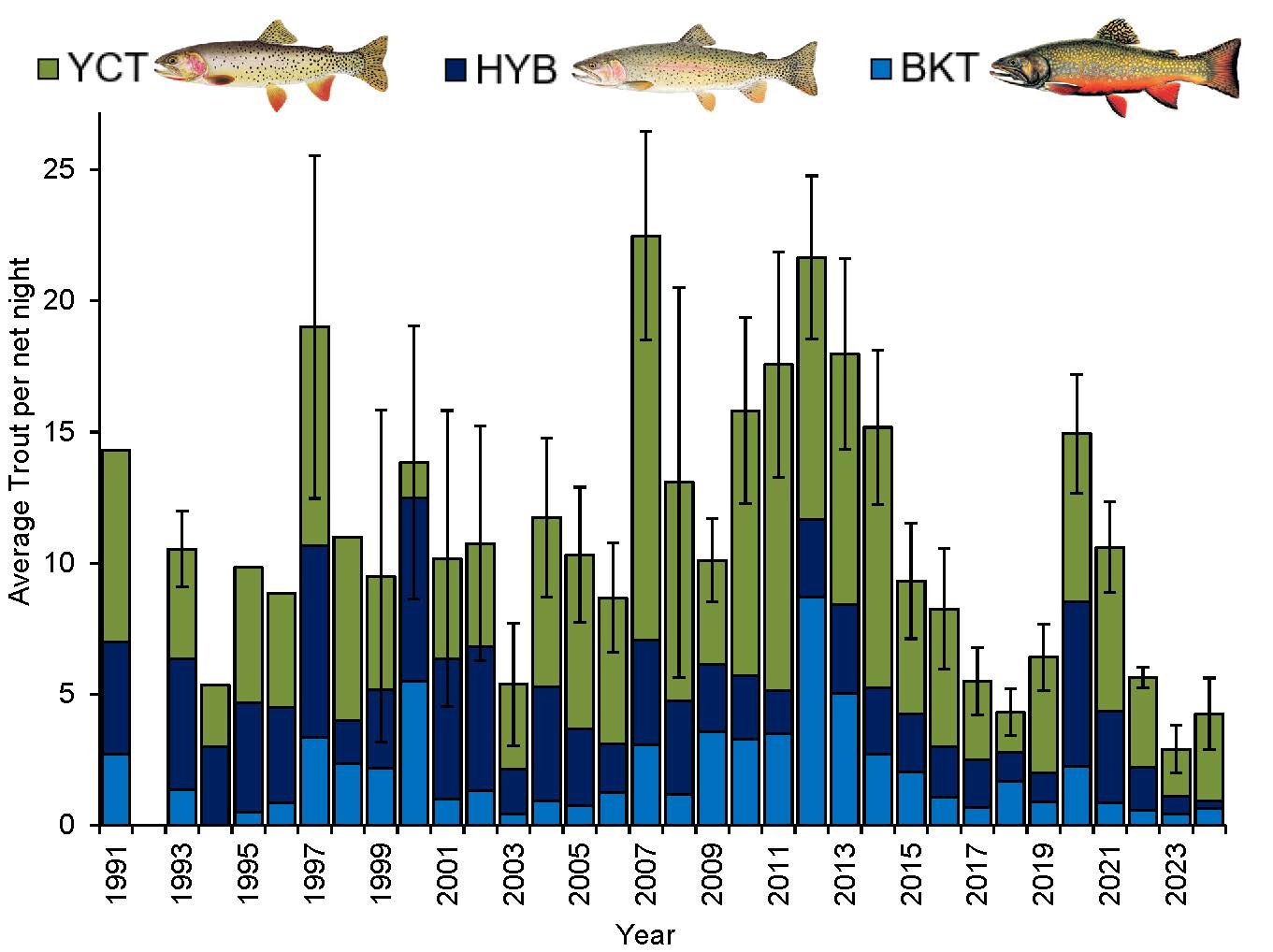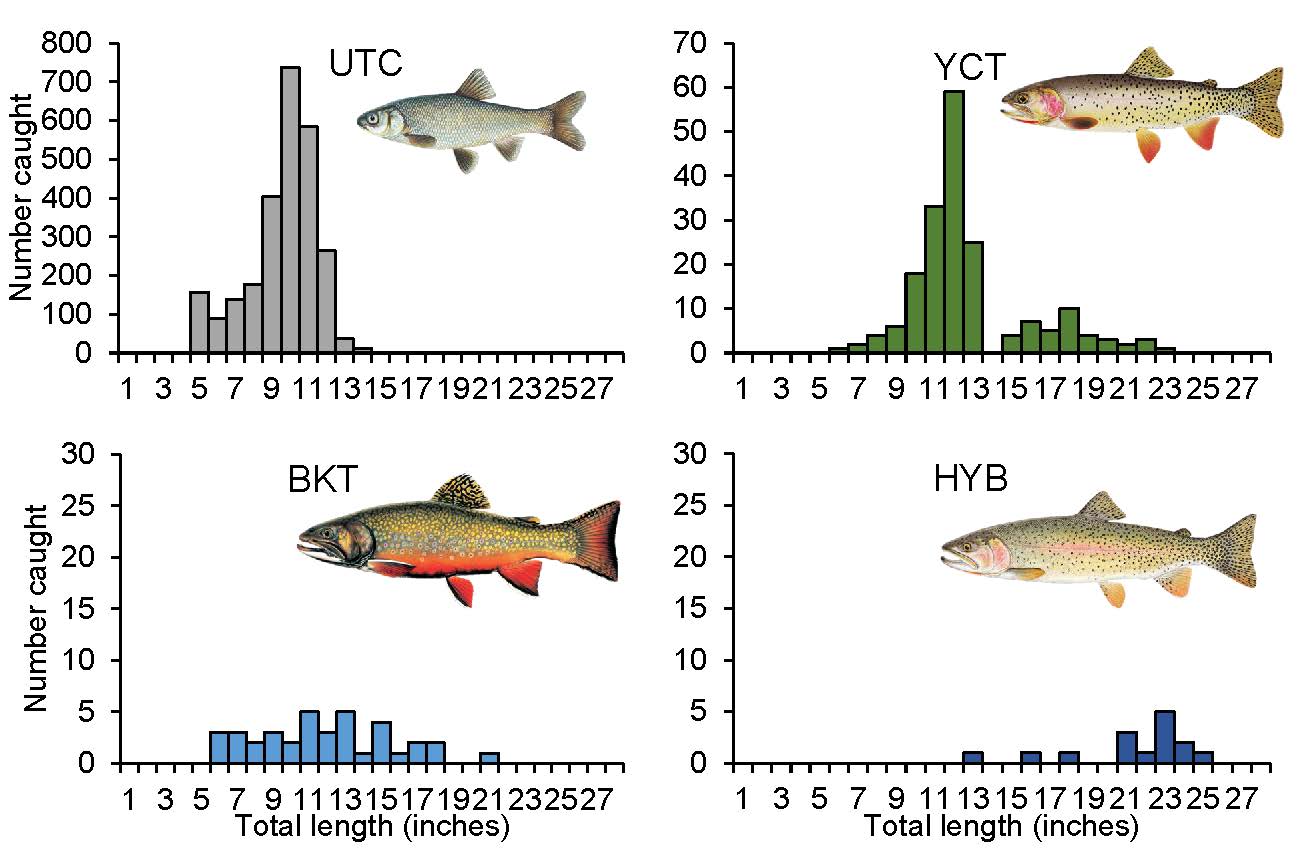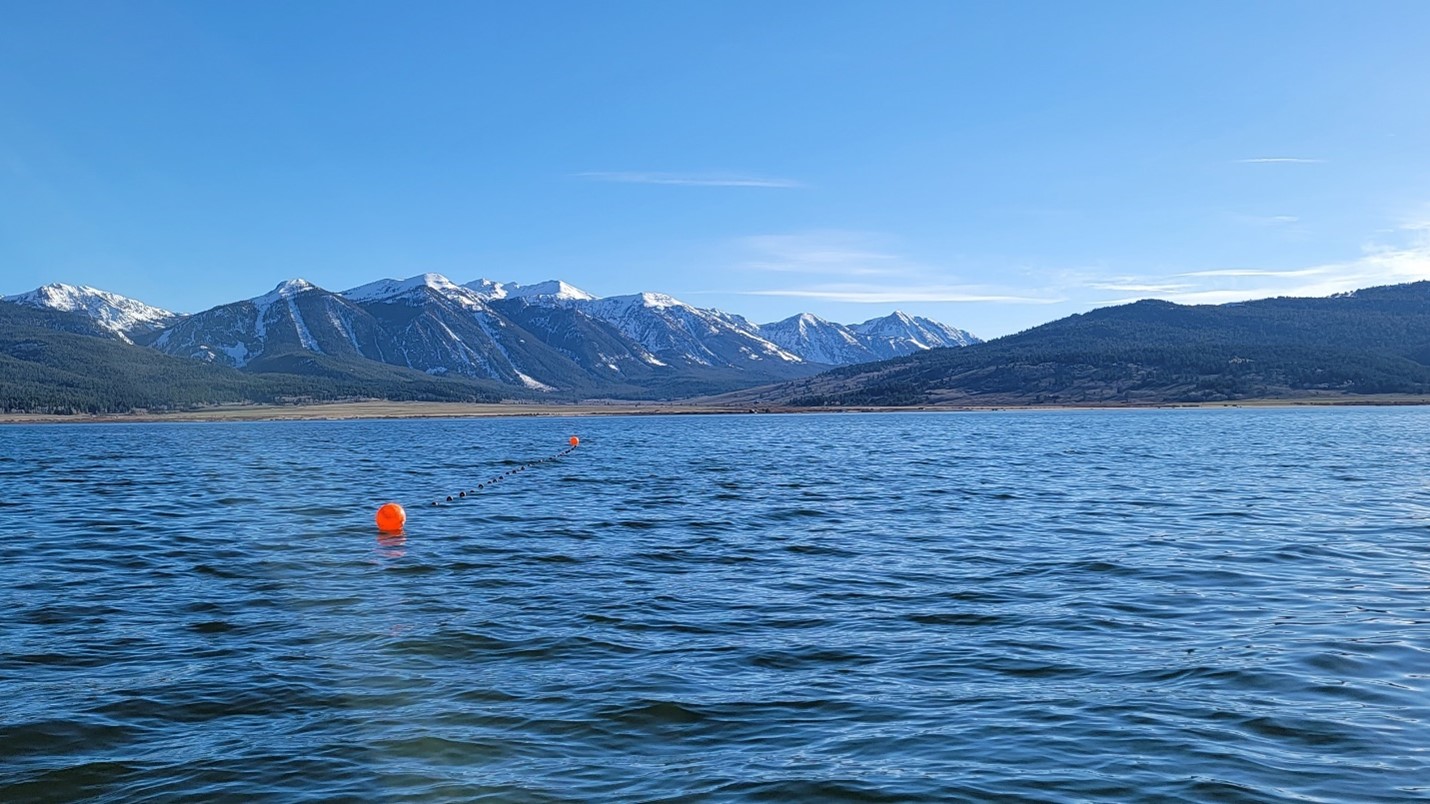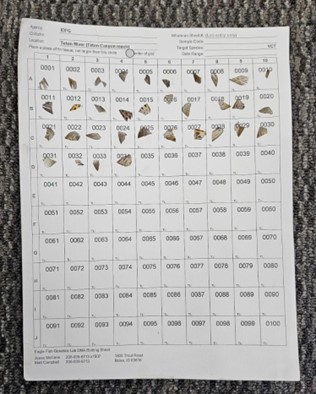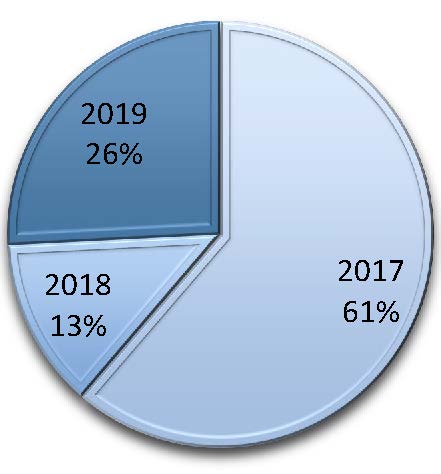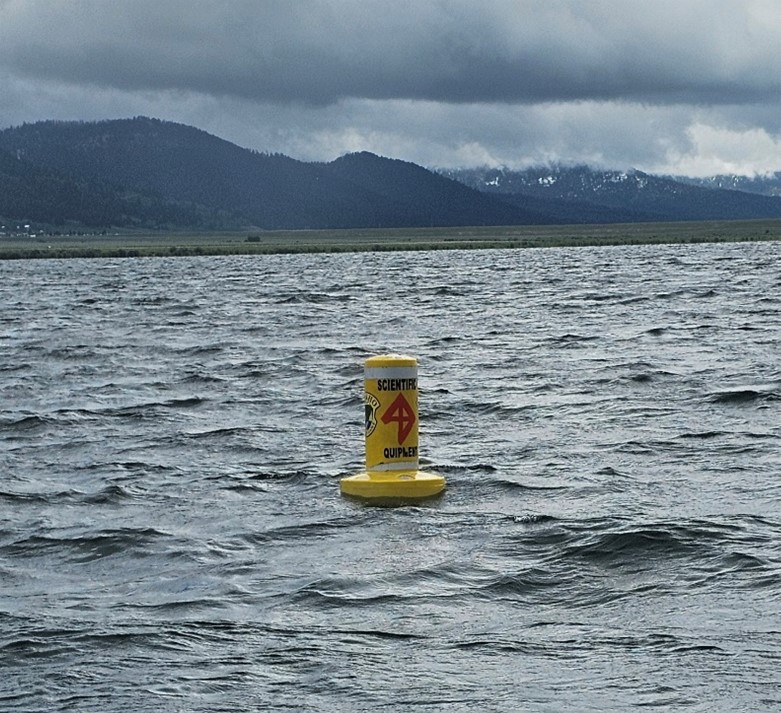Henrys Lake anglers, let’s get you caught up on recent happenings, the latest population survey, and much more! We’ve been busy this season, and there’s a lot to share. First off, a big “thank you” to the Henrys Lake Foundation for inviting me back to speak at their annual fundraising event again this year! As per usual, we had several engaging and constructive conversations related to the Henrys Lake fishery. Let’s dive in!
Annual Population Survey
To recap, IDFG conducts a gillnet survey on Henrys Lake each year to assess the current state of the fishery. We begin the survey immediately after ice-out, which occurred on May 1 this year (Figure 1), and was almost 3 weeks earlier than ice out last year in 2023! We set nets at six sites throughout the lake every night until we reach our goal of at least 50 net-nights of effort.

